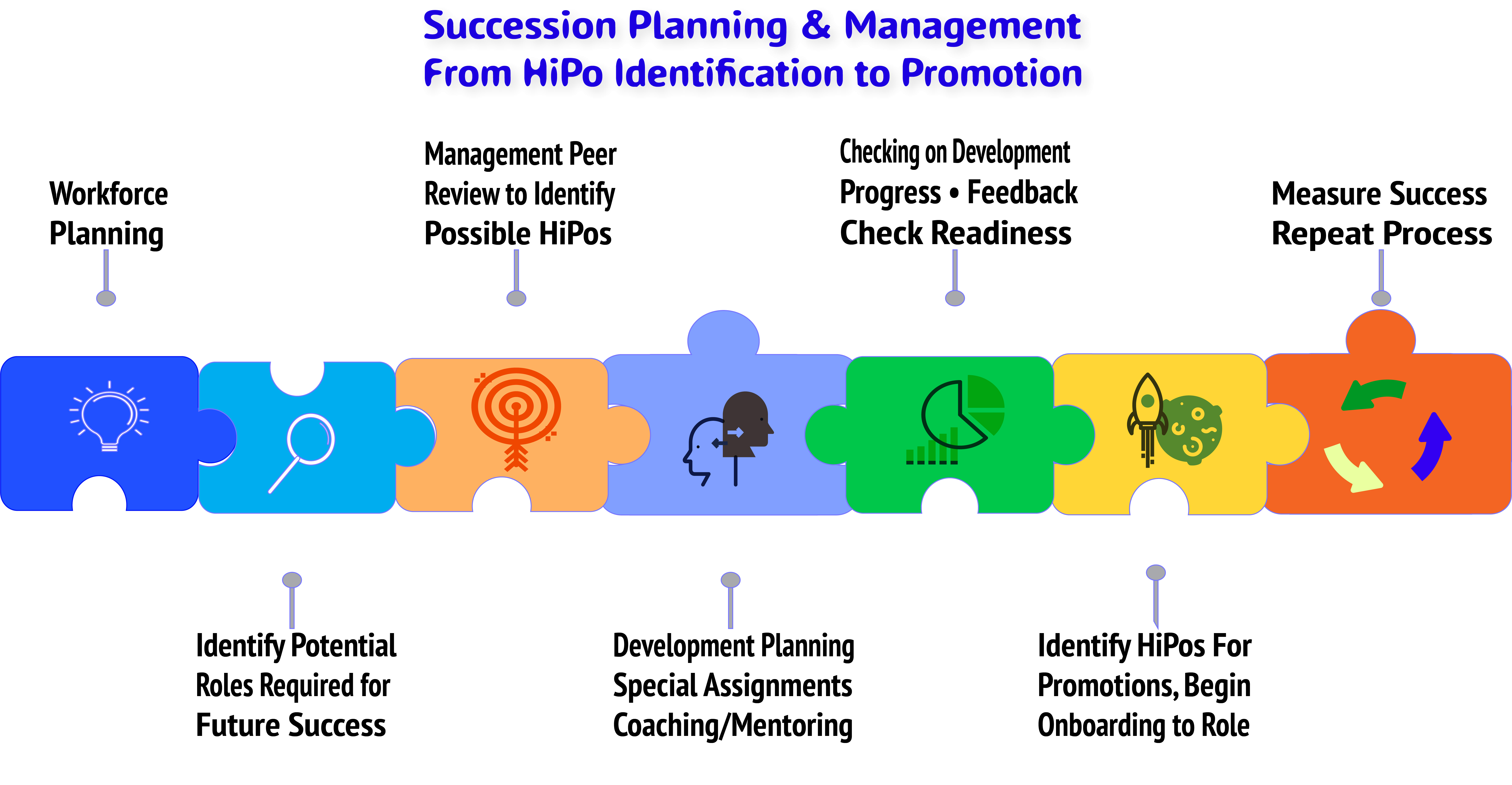Why Succession Planning is necessary
 Considering that when a leader ascends to the C-Suite they have an average of 12 years to move onto a new company or retire, planning and managing talent becomes an essential aspect of company success. Add to this dynamic that hiring from outside the company is far more expensive than developing internal talent. Yet it can take up to 20 years to develop an employee to be considered appropriate or ready for the C-Suite. If you take the perspective that succession management is limited to the C-Suite, you will be effectively creating blind spots within your organization. The key to successful succession management is to understand that it is about developing leaders at all levels of the organization.
Considering that when a leader ascends to the C-Suite they have an average of 12 years to move onto a new company or retire, planning and managing talent becomes an essential aspect of company success. Add to this dynamic that hiring from outside the company is far more expensive than developing internal talent. Yet it can take up to 20 years to develop an employee to be considered appropriate or ready for the C-Suite. If you take the perspective that succession management is limited to the C-Suite, you will be effectively creating blind spots within your organization. The key to successful succession management is to understand that it is about developing leaders at all levels of the organization.
A series of longitudinal studies have amplified why external hires to the top of the organization are usually not as successful as internal promotions. Some of the core reasons that lead to the failure of new hires are:
- They do not define the values that drive the culture in the same way as the existing employees
- They do not share a common vision/purpose for the organization
- They do not respect or even understand how to integrate the business strategy and talent strategy
- They lack the perspective of what makes the company unique
- They often bring in with them their key players from their previous company, causing anxiety with your current leadership and disrupting the balance and the culture itself
Companies must have a well-defined and structured succession plan and, at the same time, continuously and effectively manage the program. The management of a solid succession plan ensures company continuity. In a crisis, the lack of succession can cause, at a minimum, confusion in direction and lack of employee motivation. At its worst, the lack of a planned succession could result in the total demise of a company.
Our Approach to Succession Planning
A mature Succession Planning process focuses organizations on building something meaningful that enables the execution of the business plan, and is aligned with their true corporate values. The process begins by focusing on building a relevant and validated model of leadership that will sustain business success. The leadership profile is created based on the behaviours identified that exemplify the company’s authentic values. After the development of the model, we will guide you through building a series of activities that enable differentiation of employees who are Role Experts, High Potential, or Promotable Individuals.
It is critical to train senior leaders on how to differentiate between a high potential and high performer based on facts, not emotions.
In collaboration with your succession management and leadership development teams, we will facilitate the creation of a leadership curriculum (a series of formal and informal activities) that, over time, will enable Potential High participants to acquire the knowledge and behaviours required for new roles.
Succession Management Needs a Mindset Change
The traditional thinking on succession is a ladder with a person climbing upward. This linear image needs to be replaced by the paradigm of a jungle gym. Creating a mindset where success means the mastery of different capabilities and competencies will open the thinking of employees to the fact that there are many more opportunities than just remaining within the structure of their current role. It is critical that the succession plan and management is owned by the CEO.
Some of the positive impacts our Succession Planning program will have on your organization:
- Multiple qualified candidates for future leadership openings
- Clarification of the differences between high potential and high performers based on a clear set of objective criteria
- Minimize subjectivity when identifying high potential candidates
- Targeted development for high potential employees to fill the future needs of the company
- Retention of highly capable employees who are helping build toward the future
- Stability of leadership behaviours and organizational values
- A sustainable conduit of “ready now” leaders
- Building off your human capital planning, having clarity of what gaps need to be filled, to ensure Ready-Now leaders are available, on time
- Internal candidates who develop the attributes to provide leadership that aligns with the culture

For more information on BIODS, check out our blog or click here. If you would like to discuss how BIODS or our other services can help your organization, please contact us using the form here.
 DS Cohen & Associates
DS Cohen & Associates